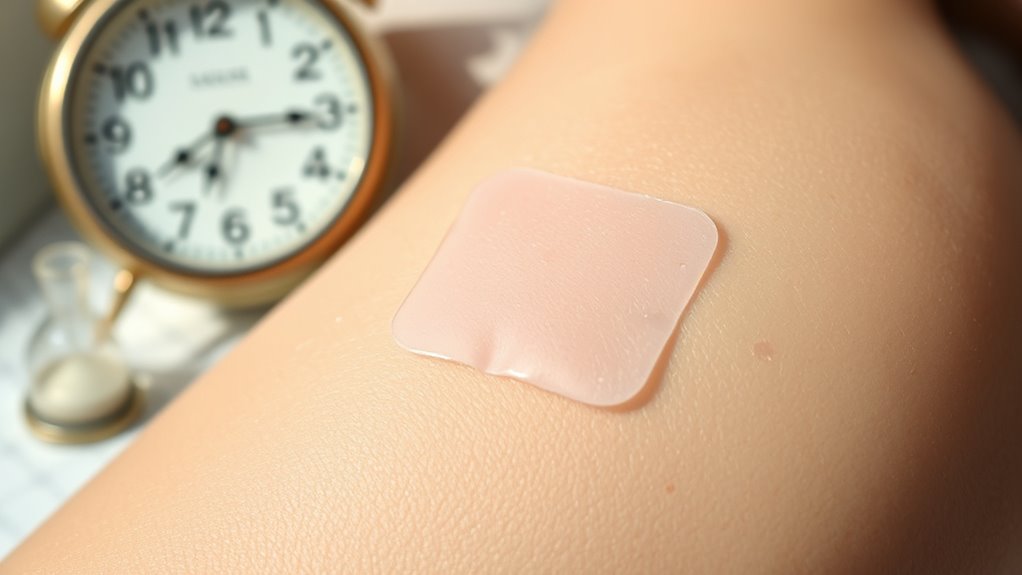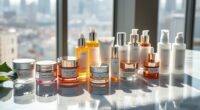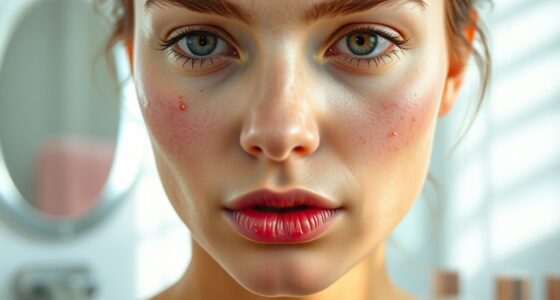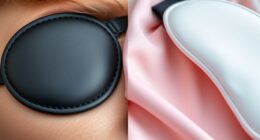Keep your pimple patch on for the ideal duration based on your acne type. For whiteheads, aim for 6 to 8 hours, while cystic acne can benefit from up to 24 hours. Sensitive skin should start with 4 to 6 hours to avoid irritation. Always replace patches when they become opaque or lose adhesion. By following these guidelines, you can maximize your patch’s effectiveness. There’s more to discover about application and patch types that can enhance your experience.
Key Takeaways
- For whiteheads, keep patches on for 6 to 8 hours for optimal results; 4 hours can be effective too.
- Cystic acne patches can be worn for up to 24 hours to help reduce inflammation effectively.
- Blackheads require longer durations with active ingredient patches but may be less effective overall.
- Sensitive skin users should start with shorter wear times of 4 to 6 hours to prevent irritation.
- Replace patches when they turn opaque or lose adhesion, and avoid reusing them to prevent bacteria buildup.
Understanding Pimple Patch Types
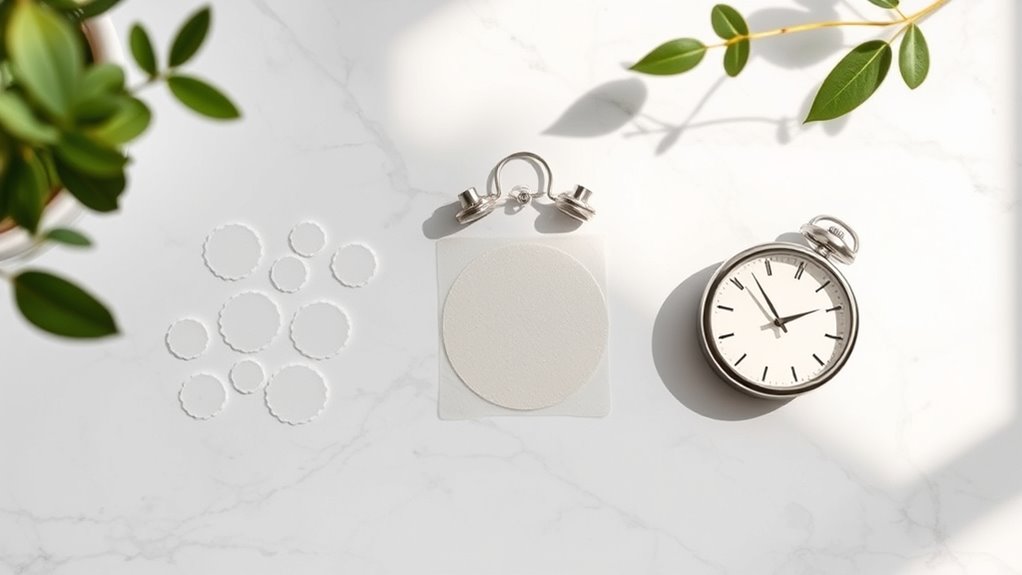
When it comes to treating blemishes, understanding the different types of pimple patches can make a big difference in your skincare routine.
Non-medicated hydrocolloid patches work wonders for surface-level pimples with visible fluid, while medicated patches, containing salicylic acid or tea tree oil, target inflammation and bacteria effectively. Pimple patches are designed for targeted, convenient, and discreet treatment of breakouts.
Non-medicated hydrocolloid patches are ideal for surface-level pimples, while medicated options effectively tackle inflammation and bacteria.
If you’re looking for deeper treatment, microneedling patches deliver active ingredients straight into the skin. For soothing hydration, hydrogel patches retain moisture, calming irritated skin.
Silicone-adhesive patches provide strong adhesion and flexibility, making them great for various skin types. Choosing the right patch based on your pimple type can enhance healing and prevent further irritation, ensuring your skincare routine remains effective and efficient.
Recommended Duration for Different Acne Types
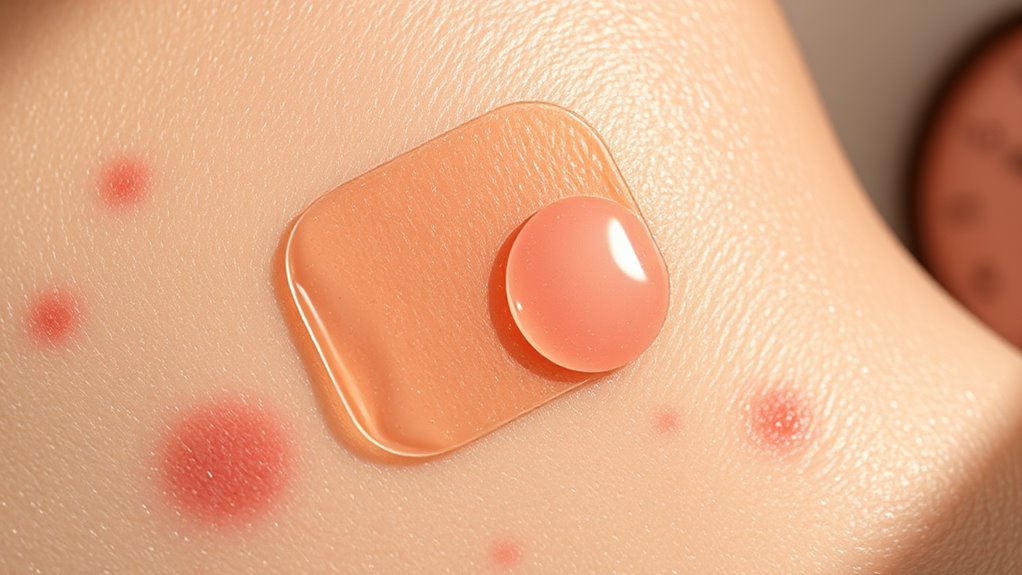
Choosing the right duration for your pimple patch can greatly impact its effectiveness, especially depending on the type of acne you’re addressing.
For whiteheads, aim for 4 to 8 hours, with 6 to 8 hours providing the best results. Pimple patches are most effective on whiteheads, the final stage of a pimple’s life cycle.
Blackheads require a longer treatment and patches with active ingredients, as they’re less effective for these types.
For cystic acne, you can wear patches for up to 24 hours to help reduce inflammation.
If you have sensitive skin, start with shorter durations of 4 to 6 hours to avoid irritation.
Oily skin may need shorter wear times too, due to quick saturation.
Make sure to monitor your skin’s reaction to find what works best for you.
Factors That Influence Patch Duration
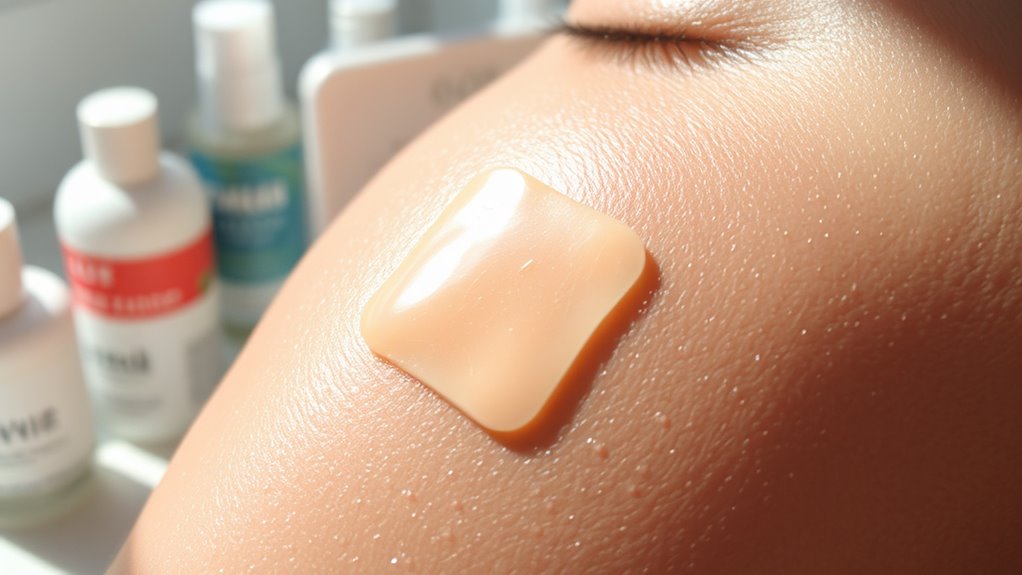
Several factors influence how long you should keep a pimple patch on, guaranteeing it works effectively for your skin type.
Several factors determine the optimal duration for keeping a pimple patch on, ensuring it effectively caters to your skin type.
If you have sensitive skin, aim for shorter wear times of 4-6 hours to prevent irritation. For whiteheads, longer durations of 6-8 hours can help absorb fluid.
The type of acne matters too; cystic pimples may need extended protection, while blackheads are less responsive. Hydrocolloid patches are recommended wear time for 6 to 8 hours to maximize their effectiveness.
The patch’s formulation also plays a role—hydrocolloid patches are standard, while those with salicylic acid might irritate if worn too long.
Additionally, overnight use (8-12 hours) supports skin repair, whereas daytime wear is often shorter.
Finally, guarantee proper adhesion to avoid premature removal and enhance effectiveness.
Best Practices for Pimple Patch Application

Applying a pimple patch correctly can greatly enhance its effectiveness, so follow these best practices for superior results.
Start with clean, dry skin by using a gentle, oil-free cleanser. Consider exfoliating with a toner to prep your skin further, and make sure to pat the area dry. Proper drying is essential, as moisture can weaken the adhesive properties of the patch.
Always wash your hands before handling patches to avoid transferring bacteria. Choose a patch size that fully covers the pimple and apply it ideally after cleansing and before other skincare products.
Use light pressure to activate the adhesive, ensuring the patch is centered and flat against your skin. This helps create a seal that protects the pimple from irritants and promotes healing.
Maximizing Effectiveness: When to Replace Your Patch
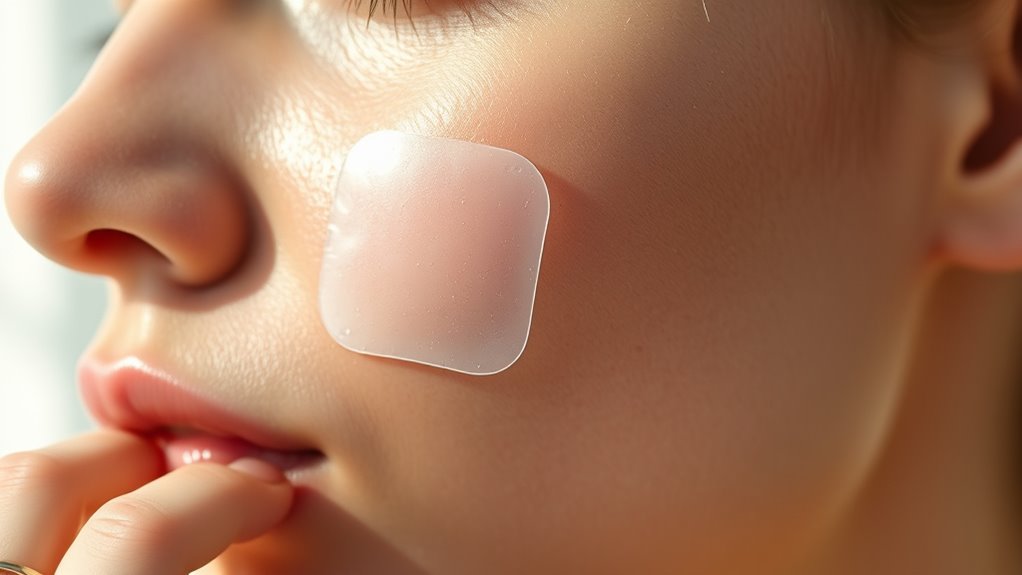
While you might be tempted to leave a pimple patch on for an extended period, knowing when to replace it’s vital for maximizing its effectiveness.
Generally, aim to wear your patch for 4 to 8 hours, but if you’re looking for better results, consider leaving it on overnight for 8 to 12 hours. Hydrocolloid technology helps absorb excess oil and draws out impurities, making timely replacement even more crucial. Be certain to replace the patch when it turns opaque or white, indicating it’s absorbed impurities. If it loses adhesion or appears dirty, it’s time for a change.
Remember, proper hygiene is important—wash your hands before applying or removing the patch.
Finally, don’t reuse patches; they’re single-use only to prevent bacterial buildup and guarantee peak results.
Frequently Asked Questions
Can I Use Multiple Patches on Different Pimples Simultaneously?
Yes, you can definitely use multiple patches on different pimples at the same time.
Just make sure each patch covers a single blemish entirely for the best results. Applying patches to multiple spots not only targets each pimple effectively but also helps prevent you from picking at them.
Remember to cleanse your face beforehand and apply them to dry skin for better adhesion.
This way, you’ll maximize the effectiveness of your pimple patches!
Are Pimple Patches Safe for All Skin Types?
Yes, pimple patches are generally safe for all skin types, including normal, oily, combination, and dry.
If you have sensitive skin, just be cautious and check the ingredients to avoid irritation. Hydrocolloid patches are a great choice for sensitive skin since they’re less likely to cause issues.
Always remember to do a patch test first, and avoid using them on sunburned or irritated areas to guarantee the best results for your skin.
How Often Can I Use Pimple Patches in a Week?
You can use pimple patches daily, but it’s essential to monitor your skin for irritation.
If you have multiple breakouts, applying a patch to each one is fine, just make sure you’re not overusing them on sensitive areas.
Typically, you can safely use them up to five to seven times a week, depending on your skin’s response.
Always replace the patches when they become opaque or start peeling for peak effectiveness.
Can I Wear Makeup Over My Pimple Patch?
Think of your pimple patch as a shield in a battle against blemishes.
You can absolutely wear makeup over it! Just apply it gently to avoid shifting the patch. Liquid or powder products work well, but opt for a matte finish concealer to help it blend seamlessly.
Remember to prepare your skin first, ensuring the patch sticks properly. With the right technique, you’ll cover that spot while letting the patch work its magic!
What Should I Do if the Patch Irritates My Skin?
If the pimple patch irritates your skin, remove it immediately and clean the area gently.
Look for signs like redness, itching, or peeling, which indicate irritation. You might want to apply a soothing cream to calm your skin afterward.
If irritation persists, consider trying patches with gentler adhesives or avoid active ingredients altogether.
Always perform a patch test before using new products to prevent allergic reactions and irritation in the future.
Conclusion
You might think leaving a pimple patch on overnight is enough, but it’s essential to know the right duration for your specific skin type. Keeping your patch on for too long or not long enough can hinder its effectiveness. By following recommended guidelines and considering your skin’s needs, you’ll maximize the benefits of your pimple patch. Don’t underestimate the power of timing—proper use can lead to clearer skin faster than you expect!
